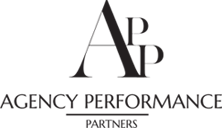Many agencies I work with struggle with change. A lot of this is human nature where we like things the way they are (get into a rut) and our fear of the unknown prevents us from taking strides to better position ourselves.
Almost counter-intuitively, one of the reasons why I see change so hard to make is a lack of consistency in an agency’s approach, system use, procedures, processes, etc. When we go to determine and implement change there is less of a systematic approach to the change. If we can’t define the current approach, how can we define what we are changing and the expected results of that change? When I work with agents through our Agency Assessment process almost all of them either do not have up-to-date procedures or after working with their staff a little, it becomes clear the procedures are not being followed.
Before we even determine we are going to make a change, we need to be able to define what we ARE currently doing. This process can be almost as daunting as implementing change. It takes a concerted effort to be able to have open and honest, appropriate conversations with the right people. Often people will be guarded in this conversation; they’re either afraid to admit they aren’t doing something correctly or afraid to admit they don’t know what they should be doing. This is the first area where I see a lack of the necessary consistency needed to define change.
Example: When a client calls in, how are we approaching a review of their existing policies and coverages? Unless this has been a specific area of focus in the past, I’ve seen very few Account Managers have an account review as part of their discussion with the client. If a client calls in with a billing question, do you or your team take the opportunity to discuss low limits or additional necessary endorsements?
Once we have identified what we are currently doing, we need to define what we think we SHOULD be doing. This means taking all of the information we’ve gathered internally through discussions with the team as well as externally through researching other approaches to establish a written set of guidelines. The two biggest obstacles in this process are getting people to agree and simple accountability. Even if you are able to get a team of individuals to agree on the approach, many procedures and systems affect more than one department. Often these departments have different perspectives and expected outcomes. These teams need to be able to work together internally and with each other to compromise on the process best for the agency. For accountability, we often get caught up in our day-to-day and have a hard time committing effort to something not immediately showing results.
Example: If you have Account Managers or Marketing Managers helping Producers marketing and placing business, their perspectives and approaches are typically much different. The Producer is probably trying to work quickly to shorten the time-frame and effort for the prospect. The person marketing the business is looking for more detailed and exact information on fully completed applications in order to guarantee the risk is accepted at the correct rate. When building on the new process, we would need to determine how to shorten the time-frame and effort as much as possible while still driving a high level of accuracy and completeness.
Once we have established the process, the major focus needs to be on consistency and tracking. We need to make sure we are following the process accurately and the same every time. This is done through thorough training to ensure a full understanding of the process by all parties and a system by which to track the process to make sure it is being followed correctly.
As soon as we have established the team understands the process and is executing it correctly, we can start to look at what to change. Consistency is the key to change because by being consistent we are not making arbitrary changes. We are able to identify where the process is breaking down and focus our efforts on implementing positive change to improve the results. I see the following example a lot when helping an agent implement a new sales tool or assisting with best utilizing the one they have as part of our AppX Sales program.
Example: When installing a new system, all parties must understand their roles. If you are implementing a new sales CRM tool with inaccurate and inconsistent use, you may be able to see why your Yield Rate (sales / total leads) is down, but you won’t be able to identify why. On the other hand, if everyone is using the system in the right way, you would be able to see which lead source has a bad quote rate or if there is a specific Producer with a decent quote rate but difficulty closing. You may have an Account Manager taking too long to turn quotes back around or a piece of lead nurturing automation not working correctly.
Whether you are building a new process or procedure or implementing a new system, take the time to establish a baseline process and then make sure you are watching it close enough to implement the right type of change. Change can be hard, but with the right approach, change both helps the staff and improves the client experience.




